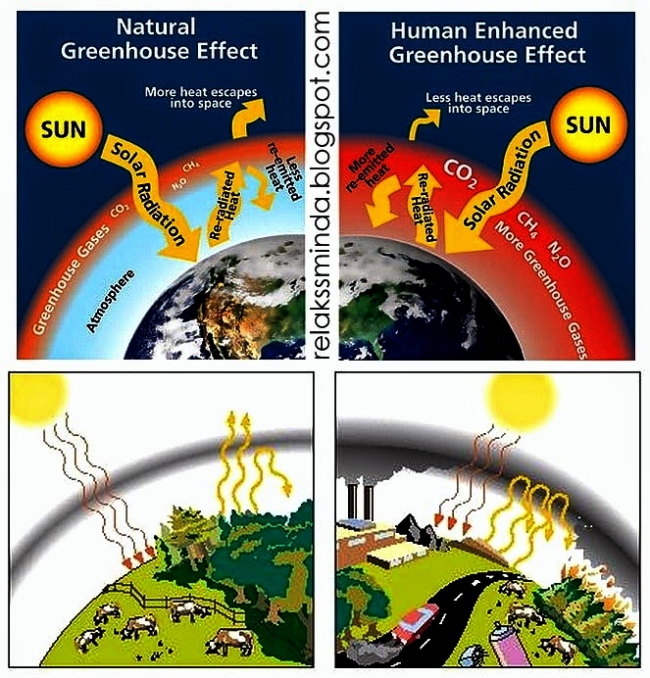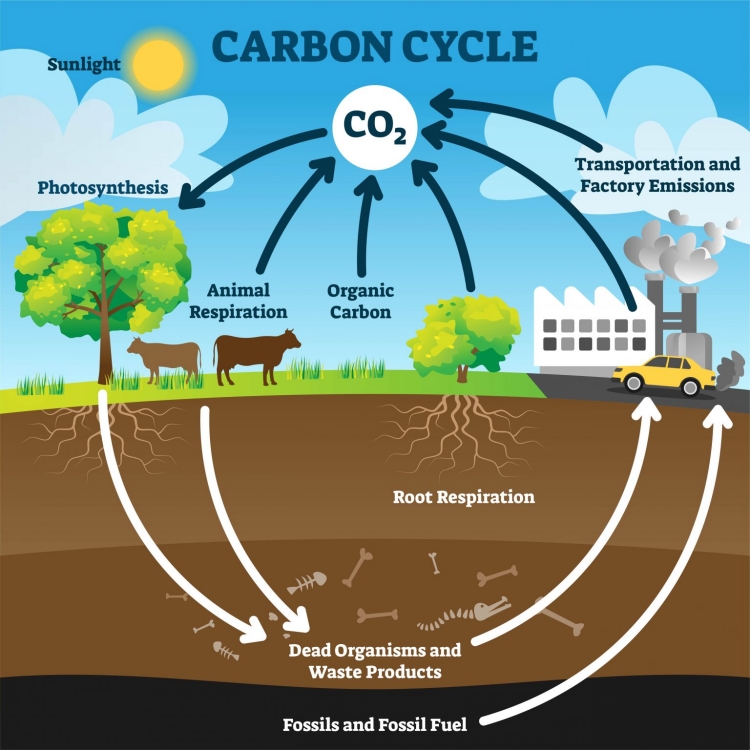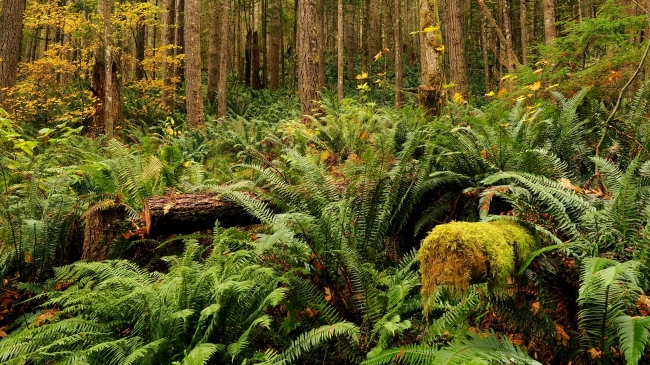. . . Climate change, by the very nature of the problem, is global in scale. Global change is the most complex issue facing humanity as a species – not as a system of government, not as a national debate, but as a threat to the future of organized human society. This is the defining issue of our age. Our Holocene is on the line.
Climate change is caused by the disruption of the natural carbon cycle. With the artificial introduction of large amounts of greenhouse gases into the atmosphere, excess carbon builds across our planetary system. The basic idea behind global atmospheric change is what scientists call the greenhouse effect. There is nothing scientifically controversial, at all, about how the greenhouse effect works. That said, I would like to address climate skepticism – and what I am about to say applies to science skepticism in general, be it climate, biodiversity, or even vaccine safety, mask uncertainty, or any other public/environmental health concern.

A consensus exists among a minuscule number of scientists who promote conspiracy theories in the public arena. However, and this is very important, these scientists do not do what all other scientists do when they think they’ve discovered something. When a scientist thinks they’ve discovered something, it is their burden and responsibility to write articles for scientific journals, give talks at professional societies, and, most importantly, present their methods of research, data collection, methods of analysis, and their interpretation of their data – their results – to the scientific community at large. Then, one must proceed to convince the national academies that something has actually been discovered. Budding scientists, even at the undergraduate level and graduate level, have gone through this painstaking process. Scientific research is carried out in a certain way for a reason. Peer review is grueling. Academics can be tough, but that is the nature of scientific research: Fellow experts, one’s very peers in the field, assess the validity, quality, and originality of research.
Now, some online journals that publish pseudoscientific “studies” look scholarly or academic in nature. Some people who hold and have very much earned masters or PhDs make claims on social media, write blogs, record videos, even go on the news to make arguments of plausible conjecture; but, if they’ve really found something, they should proceed with the very straightforward aforementioned peer review process. Yet, they only self-promote. And the reason they only self-promote is because their ideas, data, methods, and results are extremely flawed and do not withstand the litmus test of real science.

I also want to address another argument raised against science and scientists which states those of us in academies are so intimidated by the State – and the fear of losing associated federal funding – that we are afraid to dissent or challenge consensus. This argument assumes the modern nation-state and its economic structure somehow insist that scientists must publish what they are told. The problem with this assumption is that academic, scholarly research, has a very long history of challenging government power, and publishing peer reviewed science that challenges the status quo is very low-risk behavior. Science, when done correctly, seeks to disprove long-standing norms. The entire point of scientific inquiry is to push boundaries and constantly, continuously, challenge the status quo. Scientists are not out to prove anything, but to disprove everything. If even the tiniest hole in a scientific consensus can be found, then methods must be revised so a better explanation of observable phenomena can move forward. In the current peer-reviewed literature, all data suggests the climate stability of the Holocene we are all familiar with is being disrupted.
“Salvation or damnation.” Danger is on the horizon for humankind, so we must also understand the science of climate change.
The sun burns hot and pulses radiation waves in every direction. This radiation is very high energy and is carried in short wavelengths of energy that reach everything near the sun, including planet Earth. The atmosphere reflects some of this incoming energy, or, solar radiation, back into space. Some passes through the atmosphere and is absorbed as it heats the air. Still, about half reaches Earth’s surface. Our planet’s exterior heats up as a result, and, in the process, sends off longer wavelength heat back towards space. This heat passes into the atmosphere a second time, but, instead of completely escaping back into space, much of this heat is absorbed by the atmosphere and sent back down to the surface. This phenomenon occurs because many gases (the greenhouse gases) in the atmosphere are relatively transparent to the higher energy sunlight, but they reflect the lower heat energy. In this way, greenhouse gases act as a one-way filter – energy from the sun can get in, but heat cannot escape at the same rate. This process resembles how glass in a greenhouse allows sunlight to shine in, but stops much of the longer wavelength heat from escaping. Even on the coldest days of winter, a greenhouse can become quite warm if the sun is out – and why Grainger County, Tennessee, is able to pump out tomatoes all year long.
The sun’s energy is the very reason life exists on Earth. Photosynthesis aside, the Earth’s surface would be a frozen mass if it were not for the natural greenhouse effect of the atmosphere. However, in our species’ recent geological Earth history, a relative steady-state balance has been achieved that maintains the average global surface temperature at about 15°C (59°F) – this is our Holocene. Acceleration of the carbon cycle, though, from human intervention, has released greenhouse gases far beyond the natural background rate – including volcanoes – and, as a result, these gases are accumulating very quickly in the atmosphere. The worry is this could cause dangerous, civilization-altering, global change.

The greenhouse gas content of the atmosphere, from the burning of fossil fuels such as coal, oil, and natural gas, is increasing at an alarming rate. For tens of millions of years, the carbon in these fuels has been out of atmospheric circulation, buried deep underneath our Earth. Suddenly, over a period of just two and a half centuries – and especially during the last few decades – we have released massive amounts of this fossilized carbon into the atmosphere.
As we tame our planet and homogenize our biosphere, we significantly accelerate the climate problem. One to two billion metric tons of carbon is emitted into the atmosphere each year from deforestation. Like the fossil fuels, which were once living organisms, forests hold vast stores of carbon. When the trees and other plants die and are burned or allowed to decay, this carbon is converted to carbon dioxide – a very potent greenhouse gas. Furthermore, trees serve the vital function of removing this gas from the atmosphere as they grow. Unless deforested areas are quickly replanted, the carbon dioxide that is emitted directly into the atmosphere remains there, and a vital mechanism for removing excess gas from the planetary system is destroyed.
A marked change in global carbon cycling is a notable trend in all five historic mass extinction events. Our current sixth mass extinction is no different – climate change feeds into habitat loss, a decline in our planet’s biodiversity, and disrupts the very stability of our Holocene epoch. Our global temperatures were relatively stable until the 1990s; today our oceans can no longer absorb any excess heat. Over the past decade, each year has set the new record for the hottest annual temperatures on record. In just the last century, the speed of global atmospheric change is greater than the last 10,000 years. Earth is losing her ice as we continue to replace the wild with the tame.
So yes, the Holocene knows a harmony among the seasons, which is very apparent in late summer as September gives way to longer hours of darkness. Such a harmony allowed our very own species to change our evolutionary path. By understanding the seasons, when different tree species would bloom or blossom, when different crops would grow, when the wild herds would migrate, all of this natural rhythm gave way to the rise of agriculture, and, with it, modern, organized, human civilization. As climate changes, as the world warms, it is important to remember the fabric of our way of life is not certain. As naturalist David Attenborough poignantly describes in his memoir, A Life on Our Planet: My Witness Statement and a Vision for the Future:
. . . our planet is small, isolated and vulnerable. It is the only place we have, the only place where life exists as far as we can tell. It is uniquely precious . . . our home is not limitless – there is an edge to our existence.
The stories of extinctions told by the rocks I studied as an undergraduate are unfolding in real time around us every day. That said, a global conservation movement is working on the complex problems ahead of us. As species and landscapes are lost, new conservation measures are constantly being introduced into the market. Every year, renewable energy sources continue to replace fossil fuel dependence. So far in this pandemic year, for example, renewable energy is producing more energy than fossil fuels across Europe.
As technology advances in this arena prices have become much more affordable. Further, agricultural methods are being revised to meet the demands of sustainability. This is imperative for our climate future; we cannot afford to turn anymore wild spaces into monocultural farmland. Instead, forests and food production are being invited back into both rural areas and our urban environments. In turn, across the world more wilderness areas are being protected – this includes our oceans and protected marine reserves. The trick is to not only continue this trend, but to also incentivize ecosystem services and healthy ecosystem management across the globe. To do this, poverty alleviation has become a central focus of the climate movement.
“Life’s like a river in the mountain,” goes the old Scorpions song. Danger is on the global horizon. We’ve made mistakes along the way, but we learned. The possibility for a longer, brighter, freer, more sustainable, more beautiful human existence is always ahead of us. All the grandeur around us was once a violent sea of fire. Our solar system – our very planet Earth – is a much more peaceful place now. The living world is the fruit of our civilization, and, if we protect what is left, regenerate what has been lost, and invite nature into our cities, the living world will provide every element we need. The solution to our climate crisis is very simple: Restore biodiversity, rewild the world, and free human beings from poverty.
**Featured image from Blue Ox Studio on Pexels




Grant, as always, I appreciate your view as a scientist and the way you range from our present local natural history to geological time and global scale. What do you thing about the proposal of the Anthropocene as a geological epoch?
Hi Jim!
Good hearing from you, I hope all is well in your end!
Ah, the Anthropocene — I like the term and have used it in my writing, even though it’s unofficial. The term as less controversial these days. I like the debate around the term as well.
Epochs cover millions of years, so I understand the hesitancy of penciling the term in, especially as most folks point to the start as the Industrial Revolution. Others, though, say once we mastered Agriculture it began.
I’m privy to the Industrial Age myself, but only base that on carbon output. But I do support the term.